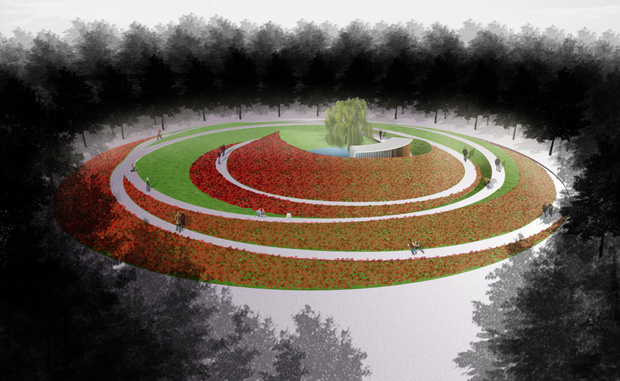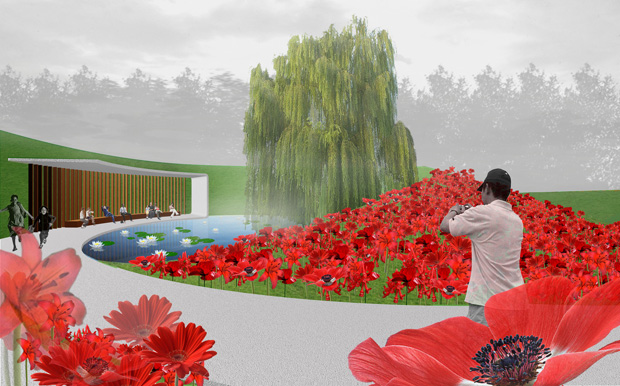‘Spiral Garden’ inzending voor China Jinzhou World Expo
De ‘Spiral Garden’ is de inzending voor een besloten prijsvraag voor een tuin in de in 2013 te houden China Jinzhou World Landscape Art Exposition.
Een spiraalvormig dijklichaam maakt een vloeiende overgang tussen de cirkelvormige ruimte in het expo-park en een centraal gelegen watertuin. De spiraal staat voor het leven: de route en ervaring veranderen in de tijd, de bestemming is onbekend.
Na een constant van perspectief wisselende wandeling arriveert men in een omsloten watertuin, een verstilde plek die ruimte biedt voor meditatie en bezinning. Vanaf een paviljoen is er ruimte te staren naar de in het water reflecterende regenwolken, tussen een treurwilg en waterlelies. De Spiral Garden voegt zich naar het regenrijke klimaat van Jinzhou: tijdens de regentijd vult de spiraal zich langzaam met het water. Hierdoor biedt de tuin ook na de expo telkens weer een nieuwe ervaring.
Besloten prijsvraag uitgeschreven door Jinzhou City i.s.m. International Federation of Landscape Architects
Ontwerp m.m.v. David Kloet
_______________________________________________________________________________________________
Spiral Garden, competition China Jinzhou World Landscape Art Exposition
A spiralling levee forms a fluid transition between the circular space in the expo park and a central water garden. The spiral symbolises life: the journey and the experience change through time; the destination is unknown.
After a stroll of continually changing perspectives, the visitor arrives in an enclosed aquatic garden: a tranquil area for meditation and reflection. A pavillion offers a view of rain clouds reflecting in the water, amidst water lilies and a weeping willow. The Spiral Garden harmonises with Jinzhou’s rainy climate. During the monsoon season, the spiral slowly fills with water, so that the garden offers a new experience each time, even after the exposition has ended.
The Spiral Garden is composed of dikes and water, landscape-architectural elements with a typically Dutch flavour. It maintains a sustainable relationship with the changing climate: rainwater does not drain into the sewers, but forms an integral part of the garden’s design. As the rain collects in the spiral, it transforms the garden’s appearance and use.



